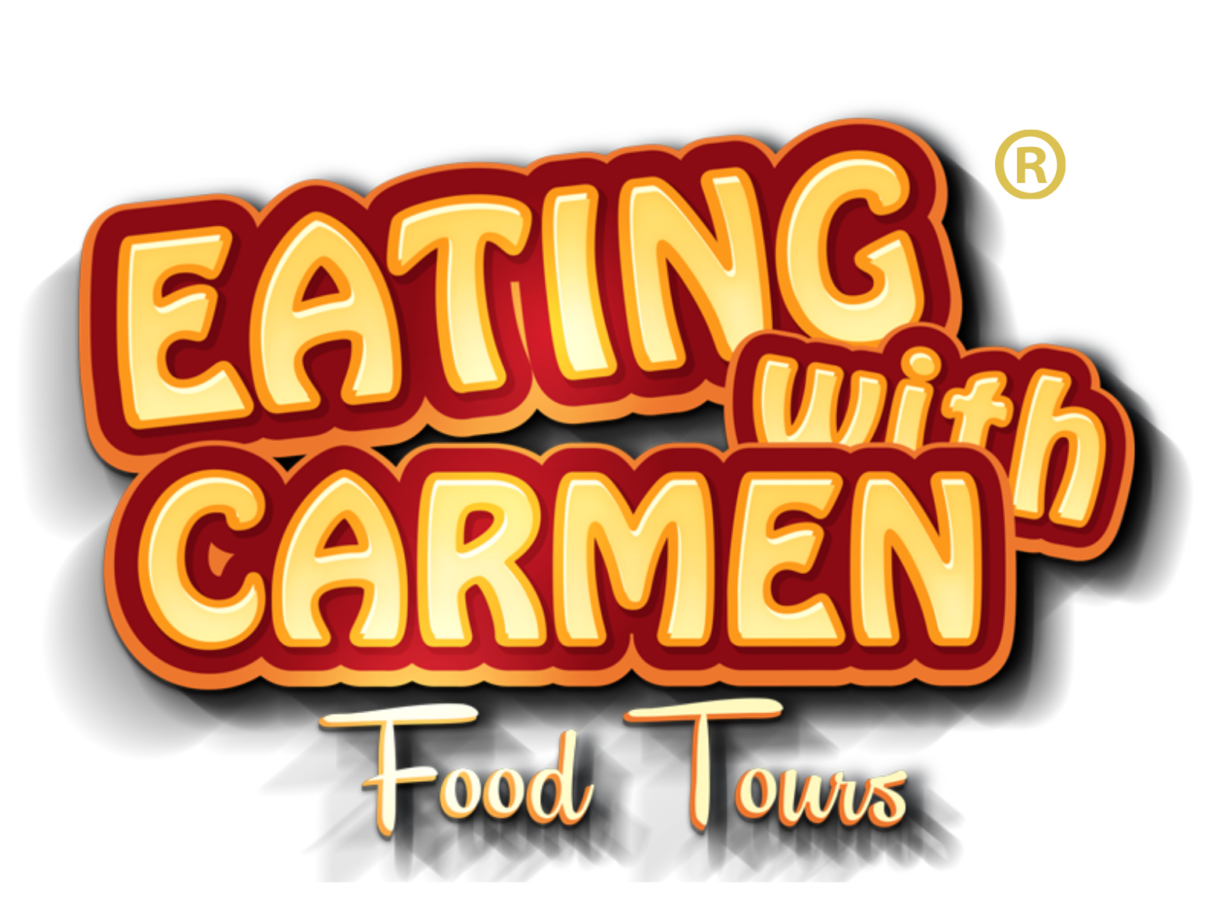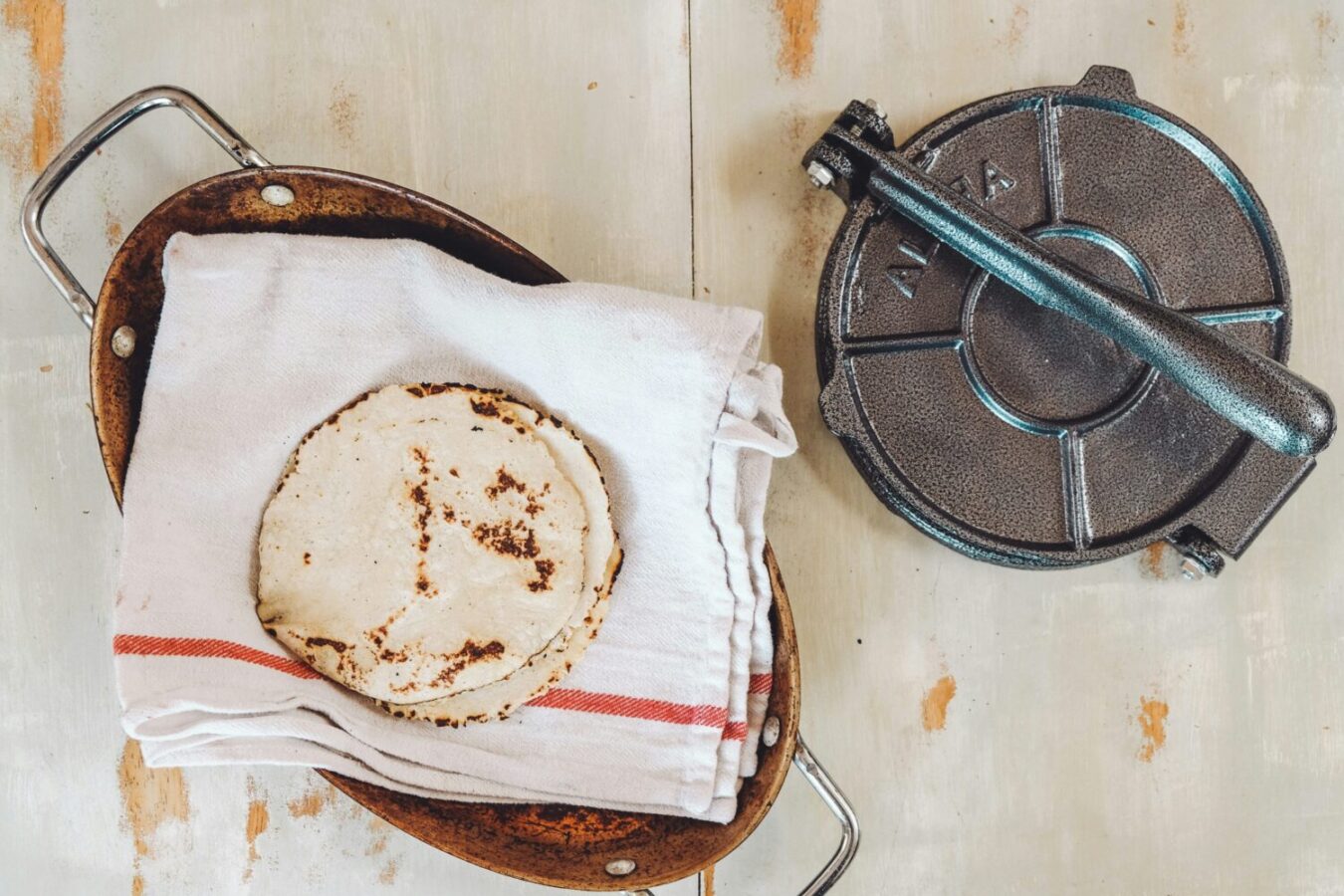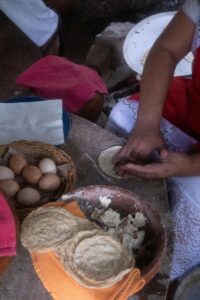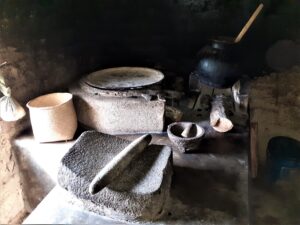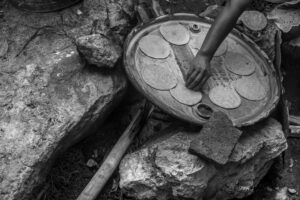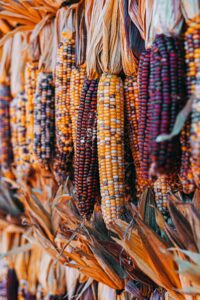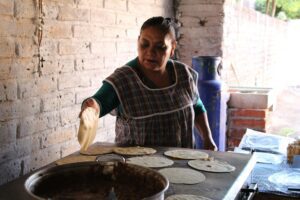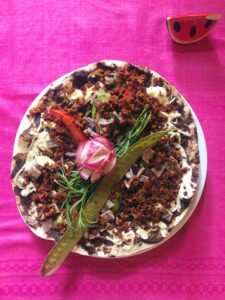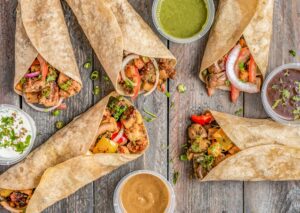When visiting any part of Mexico and walking through its streets full of history and delicious food stalls, you have surely smelled that characteristic smell of freshly made tortillas, followed by the sound of the mill and the tortilladora (the tortilla maker).
Tortillas are the main characters in a wide variety of traditional Mexican dishes, but, how did they become the essential ingredient in homes, food stalls, and restaurants, not only in Mexico but around the world?
Let’s take a journey through the exquisite process of making tortillas, soaring through the mysticism of their origins and the current importance not only in traditional cuisine but also as a big influence on the history of Mexico since its Mesoamerican times.
FROM MASA TO TORTILLA
Although you can consider the word Tlaxcalli, as the ancient and true name of tortillas, tlaxcalli could be found in different kinds, sometimes shaped a little thicker and consistent and a bit more similar to cornbread than to a traditional tortilla.
Photo by Fausto Hernández
Something we are sure of is its ingredients since they have always been the same: Corn kernels cooked with slaked lime and water. The unique flavor of tortillas comes from essential traditional processes such as Nixtamalization, grinding in metate, and cooking on clay comales.
NIXTAMAL
The word nixtamal comes from -Nahuatlnextli, which is a mix of lime collected from ashes and -tamalli-, (cooked corn dough). The nixtamalization process has various benefits since it allows amino acids and niacin from corn to be released, likewise, nixtamalized foods become a good source of calcium, iron, and phosphorus. On the other hand, it is essential to control microbes and the durability of food, in addition to being an important process to improve the smell, flavor, and aroma of the dough.
Source: Wikipedia Commons
TRADITIONAL PROCESS
To prepare the perfect masa, the corn grains are cooked with water and lime for between 40 to 90 minutes. Once cooked, they are left to rest in the cooking water for 8 to 18 hours so that the grains soften and loosen the texture peel. Afterward, the grains are cleaned with new water and ground in a mill or metate (“millstone”) to obtain the dough. Afterward, it is shaped by hand with an ancient technique that really makes a difference, or with a special press to make tortillas and finally, it is cooked on a comal or clay griddle heated with charcoal, wood, or gas fire.
Source: Wikipedia Commons
Lime is a vital element for nixtamalization since it helps to obtain nutritional benefits. Nixtamal requires lime with a minimum of 90% purity, in addition to not containing physical, chemical, or biological contaminants, and must be harmless to the consumer.
ELOTE: MESOMERICAN ORIGINS
To understand the importance of the Tortilla as the main food in Mesoamerican civilizations, we must dig into the origin of the main ingredient of the tortilla, Elote. The Mother of Corn.
Photo by Sunira Moses
The process of planting and growing corn depends largely on human care since the harvest of this plant has always been in their hands. Corn was not always as we know it, teosintles are the wild ancestors of corn that through agriculture and the selection of its best grains generated the mutation that led to corn.
Majestic cities and ancient empires were built thanks to the energy provided by this miraculous food, enhancing the health of its inhabitants, nourishing them, and making them stronger, raising a great devotion to Elote in both the Mayan and Mexica cultures, taking part in offerings and ceremonies with Gods and Goddesses entrusted to this plant.
SYMBOL OF RESISTANCE OF MEXICAN NATIVES
Since the Spanish colonization began in Mexico, Guatemala, and the rest of Central America, the Spanish tried to impose their diet, which consisted of wheat bread, beef, pork, olive oil, and wine, foods that reinforced their identity. During the first years of conquest, they hardly tried to segregate both natives and their Tortillas, only to later realize that wheat produced fewer grains than corn and required much more attention and investment. Even so, Spanish Haciendas continued to distribute much of their land with wheat to satisfy the growing demand for bread. All that collapsed in 1602 when the new inhabitants faced the first great wheat crisis caused by the torrential summer waters that completely reduced the fields of their favorite grain. In desperation, they were forced to eat corn Tortillas. The Spanish used the tortillas to convert the natives to catholicism. On Sundays, the priests began to replace the wheat flour wafers with corn wafers, and as a spiritual precaution, the friars persuaded the native Tortilleras to make the sign of the cross when cooking tortillas.
After the creation of the new nation in 1821, tortillas acquired another special meaning, in northern Mexico the new Mexican settlers adopted the wheat tortilla as a direct connection to their Spanish heritage and identity. While on the other hand, corn tortillas were prepared exclusively by the native descendants of Mesoamerica.
Photo by Diana Ramirez
For 35 years, President Porfirio Diaz attacked corn and the lifestyle associated with this grain, but even so, the vast majority of Mexicans continued to identify with the corn tortilla, clinging to it as a cultural tradition that sought to preserve the legacy of their ancestors. After Diaz was overthrown, tortilla patriotism resurfaced even more strongly.
WITHOUT TORTILLAS THERE IS NO MEXICO
The tortillas eaten in The Great Tenochtitlan were known as “Totonqui tlaxcalli tlacuelpacholli”, which were defined as white, hot, and folded tortillas, placed in a basket known as chiquíhuitl and covered with a white cloth.
Since it’s such a versatile dish, it can be accompanied by just a pinch of salt or salsa and it will still have an exceptional flavor. Nowadays, each state in Mexico has several types of tortillas, with bright colors and shapes, and over the years, different Mexican traditional dishes have been added as toppings, such as cochinita pibil, rice with tomato sauce, or fried fish with vegetables.
Although the nature of the tortilla is round, its shape varies a little depending on how it is made. A handmade tortilla is not the same as a machine-made one, of course, but there are also oval and slightly larger ones used in the classic Huitlacoche Quesadillas or crispy chicken tacos covered with cream and fresh cheese known as flautas.
There are standard-size tortillas, which are the ones typically found at the tortillería or the packaged ones, great to prepare my all-time favorites, the Mole Enchiladas or the Yucatecan favorite, the Papadzules. But there are also the very well-known “tortillas taqueras” that are significantly smaller and perfect to eat a few many delicious tacos al pastor or tacos de suadero at the street stalls.
Source: Wikipedia Commons
Traditional from the central valleys of Oaxaca, the tlayudas, can measure up to 40 cm long with different toppings such as Oaxaca cheese, meat or spicy cecina, and molcajete sauce.
In northern Mexico, the wheat tortillas are traditionally used to prepare those big burritos stuffed with beans and rice, or the sobaqueras, tortillas originally from Sonora.
Photo by Ryan Concepcion
Eating a freshly made tortilla is a delicious and unparalleled experience. If you don’t believe me, ask my dog Pia, her eyes shone brightly whenever she knew she was about to have a few. Tortillas have not only managed to occupy an important place in Michelin-star restaurants or street food stalls around the world, but they have also managed to enter the homes of families from generation to generation, I am pretty sure that right now you have a package of tortillas in your refrigerator or at least you have tried or made corn tortillas at some point in your life.
Tortillas unite us as Mexicans, they are a milestone in our identity and it’s our pleasure to share it with you and the world.
Gone for Tortillas.
See you around.
-Abbey
